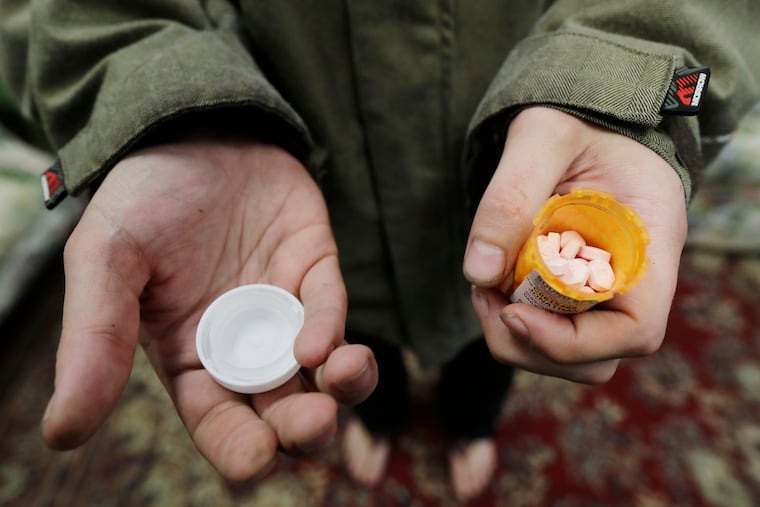‘Lifesaving work is at risk’: On the end of telehealth waivers for opioid use disorder
Pandemic telehealth rules were a game changer for patients taking opioids. Letting waivers expire could jeopardize some patients' recovery.

“I don’t want to feel like this anymore,” James said to our treatment coordinator, who held his hand and adjusted the warm blankets to ease the cycle of chills and sweats.
James had been treated with buprenorphine-naloxone (Suboxone) for substance use disorder in another state for more than two years. After returning home to Philadelphia, he struggled to find a local provider that would accept his insurance. After missing more than a week of his medication, James returned to using heroin. But the drug supply had changed since he was last using, and heroin has been almost completely replaced by fentanyl, which is much more potent and laced with other dangerous substances.
Continuing to use was too much of a risk, so James tried to quit on his own. The withdrawal was so painful that he ended up in our emergency department.
All of this could have been avoided if James had gotten the care he needed to begin with.
Last year, more than 100,000 people in the U.S. died of an overdose, mostly from opioid use disorder. Our country is in crisis and needs to be doing more to help people survive.
» READ MORE: Overdose prevention sites promote public health and don’t increase crime | Opinion
We are proud that our emergency medicine team is certified to prescribe Suboxone, and that the emergency department provides a 24/7 safety net for treatment access. But the emergency department isn’t the ideal place for care: Patients often wait many hours to be seen, and even longer to receive medication and referrals. But for many patients like James, the emergency department ends up being their only option. Patients who try to access treatment outside of a hospital or crisis center are often left to navigate recorded prompts, a voice-mail tree, and transfers to other resources. Appointments and medications can be several weeks away. And for anyone seeking treatment for substance use, every moment counts.
To address the need for better access to medication, our team at the Penn Medicine Center for Addiction Medicine and Policy partnered with the Philadelphia Department of Public Health and Penn Medicine OnDemand, Penn’s virtual urgent care clinic, to develop a new hotline — which we call a “warmline” because it is staffed by peers either in recovery themselves or who have experience supporting a loved one through substance use.
When patients call CareConnect, they talk to someone who can help guide them through the multiple pathways of care in Philadelphia. After a brief assessment of the patient’s needs, the navigator can direct them to Penn Medicine OnDemand, where trained clinicians evaluate patients via telehealth and prescribe buprenorphine to start immediately if appropriate. The care is billable through insurance, and free to people without.
CareConnect is possible because of guidance issued in March 2020 by the Drug Enforcement Administration during the pandemic, which allowed providers to start patients on buprenorphine using “audio-only” telehealth (i.e., telephone without video). Following this policy change, our team began to assess and treat patients with buprenorphine via telephone, bypassing the need for an in-person evaluation; this ultimately developed into our warmline. And we’re not the only ones: Our colleagues at the University of Pittsburgh Medical Center developed a similar model of buprenorphine telehealth that expanded and served hundreds of patients, including in rural areas of Pennsylvania, and we’ve seen a similar model implemented by the Rhode Island Department of Health.
So far, we have saved dozens of patients from experiencing a gap in their treatment for opioid use disorder, which could challenge their recovery. But now, that lifesaving work is at risk.
“For now, we remain in limbo.”
On June 30, the waivers that have allowed our health providers to treat new patients on buprenorphine via telehealth are set to expire. This means that this safety net is in jeopardy. CareConnect can still refer patients to Penn Medicine OnDemand, but they wouldn’t be able to get a prescription unless they were in person with a health-care provider in a facility. Reverting to that approach negates the innovation and progress that have resulted from pandemic telehealth expansion.
President Joe Biden stated that he supports extending these emergency orders, which would allow us and other prescribers to continue starting medications for opioid use disorder via telehealth. But for now, we remain in limbo.
As we wait, the only thing we can do is continue to help the people who reach out. Less than 10% of people who struggle with opioids receive medications that can change the trajectory of their lives. We need to creatively expand our safety net to make it easier for people with substance use disorders to get the treatment they need and deserve.
Brittany Salerno is a master of public health candidate at the University of Pennsylvania and emergency buprenorphine outreach coordinator at the Center for Addiction Medicine and Policy.